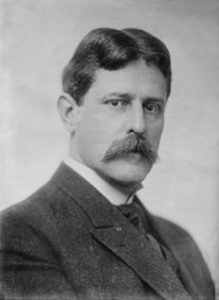Dr. Williams’ 1914 book “Twilight Sleep: Simple Discoveries in Painless Childbirth” ~ Background Info and quotes {Set-B}
The story of Dr J. Whitridge Williams, famous early 20th century obstetrician (author Williams Obstetrics) who invented the idea of “elective hospitalization” of healthy middle- and upper-class maternity patients as paying customers

This is background information on the latest and most important breakthrough in my research on obstetrical medicine in the US. The Stanford medical library copy of this book was digitized by the Google Library Project.
TWILIGHT SLEEP ~ Simple Discoveries in Painless Childbirth” is a small 128-page book co-authored by Dr. JW Williams and Dr. Henry Smith Williams, an MD-colleague and science-writer.
I discovered this most important missing piece in a 1914 historical document by Dr. J. Whitridge Williams, in which he introduced a new business plan that used healthy maternity patients as the primary source of revenue for developing a nationwide system of general hospitals.
These ideas were
In my historical research on obstetrical medicine in the US, I was fortunate to come across a copy of this 1914 book in Stanford University’s medical (Lane) library. It was one of the very first batch of books digitized in 2008 by Google’s new “Library Project”.
Twilight Sleep: Simple Discoveries in Painless Childbirth was co-authored by Dr. J. Whitridge Williams, a professor of obstetrics at John Hopkins University Hospital, and Dr. Henry Smith Williams (no apparent relation), who also was a well-known and respected science-writer. Dr. JW Williams book introduced a new ‘business plan‘ for using healthy maternity patients as the primary source of revenue to finance a new nationwide system of hospitals.
His reason for monetizing normal childbirth was purely economic. As ‘paying customers’, the profits generated by small ‘lying-in’ hospitals and lying-in wards in larger hospitals would be used to finance a nation-wide system of general hospitals all across America.
Most countries in Western European had developed nationalized systems of general hospitals centuries ago. These big and often famous hospitals provided state of the art medical and surgical care to all its citizens. One of the most famous is the Hotel-Dieu, which was founded in 600 CE in Paris on the river Seine.
However, in the United States, the American Medical Association (AMA) rejected any and all types of government funding of hospitals an/or salaried doctors as the despised “socialized medicine”.
Faced with an apparently insurmountable barrier to a “modernized” hospital system in America, Dr. Williams came up with a brillant (but unethical) “work-around” — the notion that the “modern” way for well-off white women to give birth was in a hospital where would be given Twilight Sleep drugs and would give birth .
Dr. Williams’ book is a very specific blueprint for convincing husbands that their educated and upper-crust (i.e. white) wives risked permanent mental breakdown from the pains of normal labor unless they were hospitalized and given Twilight sleep drugs and had a forceps-assisted birth under general anesthesia during. Dr. Williams’s “plan” included convincing public officials and wealthy philanthropist (also all male) that midwives and home birth were unspeakably “old-fashioned”; they need to be driven out of business and replaced by hospital maternity departments staffed by nurses.
Dr Williams reasoned that if he and the husbands of America could talked just half of the two millions women who gave birth every year into having a hospital birth, the profit that generated would provide a steady revenue stream that would allow each small one-room (2-10 bed) hospital to gradually upgrade their medical equipment and remodel their facility until they finally turned into a fully-equipped and well-staffed general hospital.
How I stumbled across Dr. Williams’ book and how it changes almost everything we think we know about the historical development of obstetrics in the United States during the 20th century.
These ideas were the subject of a small book called
The information in this book was my most important breakthrough in understanding our uniquely “American” model of obstetrics. Dr. Williams’ book provides the critical missing pieces in the puzzle of why obstetrically-managed childbirth in the US is so different from Western Europe and other nationalized systems in which midwifery was and is a respected a part of their mainstream healthcare systems.
